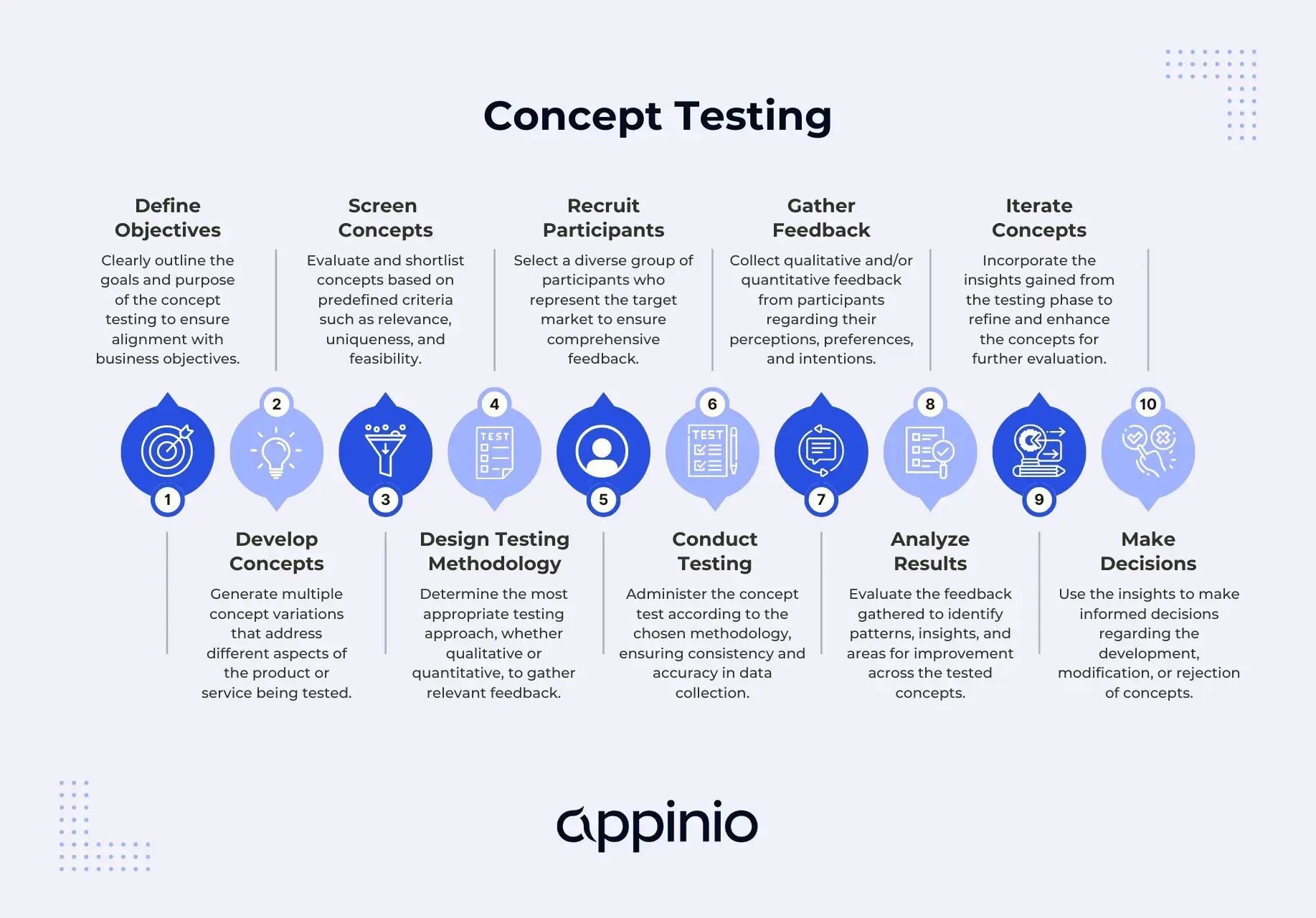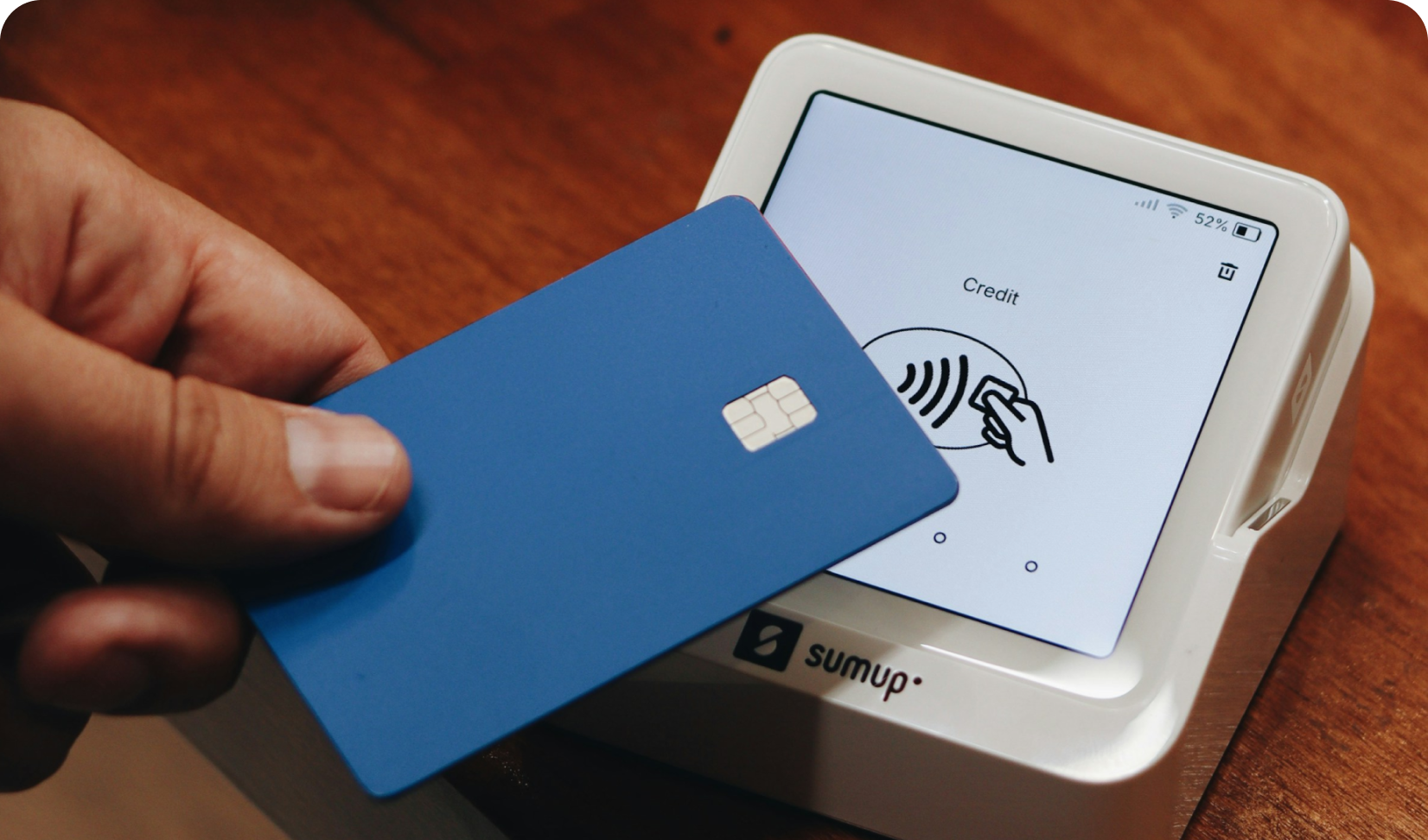4 Steps to a Concept Testing Survey
Appinio Research · 20.10.2022 · 8min read

Content
Introduction
Having an outstanding idea for a product or service does not guarantee success. Many ideas fail because there is simply no market for the offer. In order to avoid this, concepts are tested in advance with the specific target audience.
Concept testing examines the acceptance of an innovative idea by a potential target audience as well as the chance of the product idea on the market in the first development stage. The insights, generated by a concept test, form a valuable basis for optimizing the product before market launch. But is also important for positioning and target group segmentation. Concept testing therefore does not require a finished product. A formulated concept of a product or service is sufficient.
Concept testing starts at the beginning of a product development cycle (see diagram, "Prototyping" phase). The aim is to find out the strengths and weaknesses of the offer. Questions to be answered with the help of market research are, for example, "Is the general product idea attractive?", "Is the assumed core benefit of the product idea really relevant?" or "Which product features are still missing?
But to whom exactly do you ask these questions? A concept test is carried out within a relevant target audience. This does not necessarily mean, however, that the future customer has to be outlined very granularly. Especially in the case of new or innovative concepts in the first development stage, you can define the potential customer somewhat more broadly. The reason: Concept testing provides the first insights for a detailed target audience analysis.
Companies should carry out a concept test not only before the product launch. It is worthwhile to test products or services iteratively in all important development phases before and after market launch in order to constantly improve and further develop it.
On this page, we explain the structure of a concept test survey.

1. Concept Testing Survey: Explaining the Product Idea
The first step in a concept testing survey is to present the product idea to the survey participants by means of a verbal concept, i.e. a description in written form. Sketches or mock-ups can be used in addition to the description.
A verbal concept classically consists of the building blocks insight, benefit and reason to believe:
- Insight
The Insight explains why the consumer needs the product at all. It can be formulated as a conflict or a problem, sometimes it just names a situation from the consumers' world. The insight should always be formulated from the perspective of the potential customer and should have to do with the topic or environment of the product, but not with the product itself. The statement refers to the consumer's world before the product idea existed.
- Benefit
The benefit is the customer promise. What benefits does the product have for the consumer? The benefit is, so to speak, the answer to the insight or the solution to the problem described in the insight.
- Reason to believe
The reason to believe is the proof for the consumers that they actually get the promised benefit. It supports the benefit and can be functional or emotional. This includes, for example, product features and the technology behind them, ingredients, expert recommendations, etc.
The description of the concept may influence the survey results, so companies should pay attention to the following:
- All relevant information must be neutral and factual.
- Technical vocabulary is a no-go if the survey participants are not from the respective industry.
- Advertising jargon should be avoided.
- It is important to explain the concept as briefly as possible (this also applies to the length of the individual sentences!) and to structure the content clearly.
If more than one novel idea is to be tested in a concept test, we recommend the monadic approach, in which each respondent evaluates only one concept within a survey. This prevents the opinion of the survey participants from being influenced by the various concepts.
A semimonadic approach is particularly useful for very short concepts and few survey questions. How many concepts should be tested within a survey depends on the volume of the product ideas and the number of survey questions. A survey should not contain more than six consecutive concepts.
Research experts answer: Can many different concepts be tested?
Yes, many different concepts can be tested. Concept testing allows you to explore various ideas and determine which resonates best with your target audience, ensuring you move forward with the most promising option.
2. Concept Testing Survey: Liking or Disliking of the Product Idea
Once the product idea has been sufficiently explained, the question of general liking follows. It is recommended to work with a four- or six-step Likert scale from "I don't like it at all" to "I like it a lot".
Subsequently, the reason for liking or disliking the product idea is asked in an open question. Negative and positive feedback from the potential customers is indispensable for further product development. On the one hand, this allows product defects or usage barriers to be identified at an early stage from the customer's point of view. On the other hand, individual product features can be identified that are particularly stimulating to use.
The questionnaire then contains individual questions on product understanding as well as on the credibility or uniqueness of the offer. The consumer feedback helps the company regarding product optimization and in its subsequent positioning on the market in terms of USPs and marketing communication.
3. Concepting Testing Survey: Purchase Probability
Just because the target audience finds an offer attractive does not mean that there is a demand for it. Further important questions in the questionnaire of a concept test are therefore the interest in the product itself and the purchase probability. These two aspects can be easily be asked using Likert scales. The target audience can thus be narrowed down further.
In subsequent tests, only those target group segments are surveyed that like the concept and are willing to pay for it ot buy it. In order to generate detailed insights, the explicit reason for purchase or reason for use can also be queried.
A questionnaire for a concept test naturally looks different depending on the product or service idea. In the case of a physical product, the decisive factor for the likelihood of purchase is where consumers would most like to buy it. Other interesting aspects are design preferences, flavors, ingredients, packaging, etc. In the case of services, questions can be interesting as to how potential customers would like to be contacted or under what conditions the service would be most likely to be used.
4. Concept Testing Survey: Pricing Analysis
If enough survey participants were enthusiastic about the product idea and if they were theoretically willing to buy, a price analysis can be part of a concept test. In a first price inquiry, you can determine whether there is a price readiness for which the new product would be marketable.
In order to know more about how to query price willingness and price sensitivity, please visit our guide on the Van Westendorp price analysis.
Interested in testing your product idea?
The Appinio platform offers questionnaire templates and sample surveys for a concept test.
These resources can guide you in creating a well-designed survey that can provide you with valuable insights to improve your product and better understand your target audience. Try it out for free!
Summary of Concept Tests
Iterative concept testing is important at every stage of product development. Depending on the degree of product development, you can carry out detailed products tests with different foci. For example, the focus can be on concrete product characteristics, a name testing survey or a packaging test.
Do you want to test your product idea? In our dashboard, we provide questionnaire templates and sample surveys for a concept test.
Get facts and figures 🧠
Want to see more data insights? Our reports are just the right thing for you!



